The Chenglong Wetlands International Environmental Art Project (成龍溼地國際環境藝術計畫) is back for the sixth year in a row with five artists from around the world using eco-friendly, biodegradable materials to create art installations — all in the name of raising awareness of environmental issues. This year’s exhibition, entitled Fragile — Handle with Care (易碎品,小心守護), is meant to highlight the fragility of the surrounding environment. The tiny village of Chenglong in Yunlin County has long suffered from land subsidence and rising waters caused by human errors, natural disasters and global warming. The goal is that by working with students at Chenglong Elementary School, the project will help to cultivate an environmental consciousness within the youngest members of the community. Not only children, but residents of all ages are also invited to participate in the project by helping the artists construct their installations. This year’s participants include Australian-born, Canadian-based artist Christopher Varady-Szabo, Marisa Merlin from Italy, Tsuneo Sekiguchi from Japan, Roger Rigorth, a Swiss artist based in Germany, and Lee Chao-chang (李朝倉), who is originally from Yunlin County.
■ Chenglong Wetlands (成龍溼地), Chenglong Village, Kouhu Township, Yunlin County (雲林縣口湖鄉成龍村), tel: (05) 797-0856. Getting there: buses run to Chenglong Village from Chiayi HSR, but taxis are the most convenient way to arrive at Chenglong Wetlands and the fare is approximately NT$600
■ Until May 4
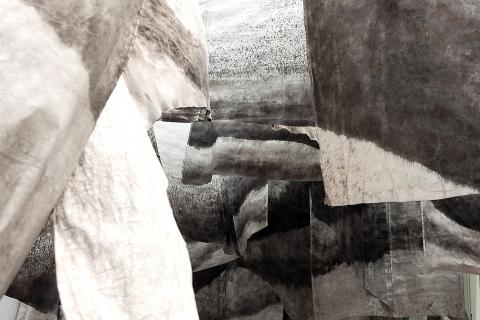
Photo courtesy of Taipei Fine Arts Museum
W(h)o is Wu? (無先生在哪?) is a joint exhibition at Waley Art in Taipei comprising of local and Austrian artists which explores the concepts of identity, language and cultural misunderstanding through photography and other mediums. Curated by Austrian sinologist Mosleh Fariba, the idea behind the exhibition is to enable artists from different cultural backgrounds to work together and learn from each other’s artistic styles. The exhibition will be highly interactive and dialectical, with the artists creating works on site, in front of live audiences. Austrian artist Florian Nitsch will be participating, as well as Taiwanese artists Chang Chih-chung (張致中) and Chou Ming-yi (周明誼), among others. The completed works will be showcased in Vienna this coming fall.
■ Waley Art (水谷藝術), 6, Ln 322, Wanda Rd, Taipei City (萬大路322巷6號), tel: (02) 2301-1821. Open daily from 10am to 8pm
■ Opens tomorrow. Until May 10
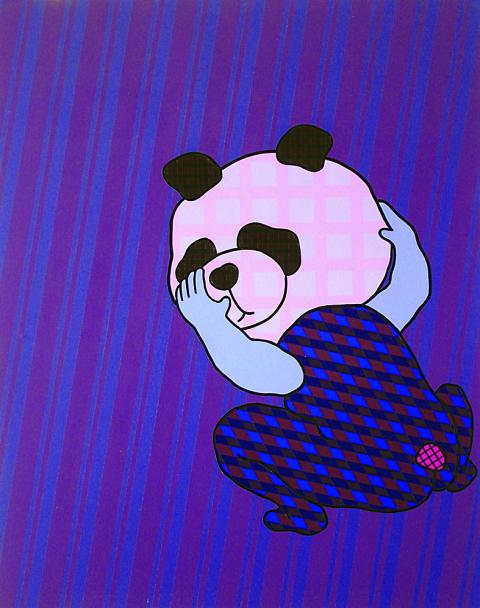
Photo courtesy of Metaphysical Art Gallery
In order to demonstrate the monotony in people’s daily routines, artist Li Hao (李浩) returned to the same train station and hyper-mart every day for weeks to photograph scenes from a select few spots. The result is a series of overlapping, multi-exposure photographs, all of which consist of flurried lines, frenzied zig-zags and shadowy outlines of people trudging by. Li does this in order to show how human beings have given in to a system that emphasizes efficiency and productivity over happiness and self-fulfillment. His work is on display at Yesart Air Gallery in an exhibition entitled Le Mecanisme Repetitif/ The Repetitive Mechanism (複構即迴).
■ Yesart Air Gallery (意識畫廊), 2F, 48, Zhongshan N Rd Sec 7, Taipei City (台北市中山北路七段48號2樓), tel: (02) 2876-3858. Open Tuesdays to Sundays from 2pm to 8pm
■ Until May 31
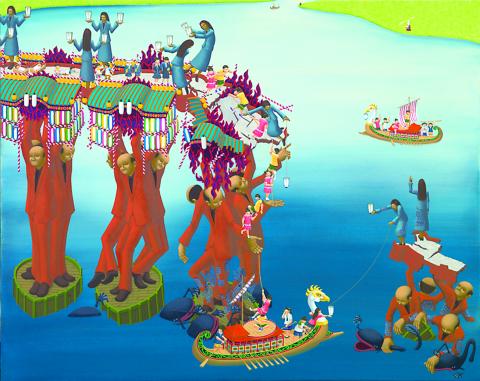
Photo courtesy of Metaphysical Art Gallery
Spring is in full bloom. That means it’s time to chuck away the old and usher in the new. Change ‧ I Change (我變,我變,我變變變) is an exhibition at Taipei’s Metaphysical Art Gallery featuring artworks centered around the concept of “change.” As the gallery notes state, “‘change’ has become a necessity for creativity.” The artists hail from Taiwan, China, Japan, South Korea and the US. From Liao Yu-an’s (廖堉安) patchwork-like paintings of stuffed animals to Chiharu Nishizawa’s ceramic shards and Yee Soo-kyung’s convoluted and disproportional paintings, the exhibition resembles a comic carousel of whimsical colors and lost childhood dreams.
■ Metaphysical Art Gallery (形而上畫廊), 7F, 219, Dunhua S Rd Sec 1, Taipei City (台北市敦化南路一段219號7樓), tel: (02) 2771-3236. Open Tuesdays to Sundays from 11am to 6:30pm
■ Opens tomorrow. Until June 28
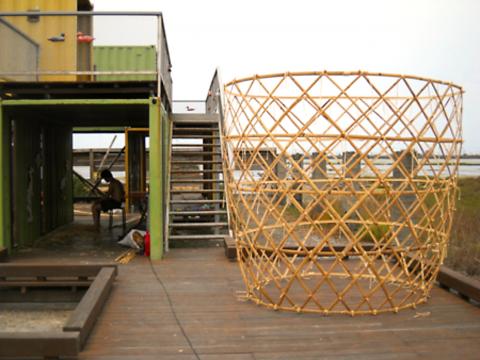
Photo courtesy of Chenglong Wetlands International environmental art project
The Taipei Fine Arts Museum has an exciting new exhibition from the winners of the 2015 X-site (第二屆X-site計畫), a competition that seeks to bring architectural elements to public art. Entitled The Texture of Uncertainty (未知的質域), the 630 square meter labyrinth of dangling sheets depicting black-and-white mountains and other earthy textures was created by the group Synchronic Composing Architect (共時書寫建築工作坊) which comprises of artists Chiu Yu-wen (邱裕文) and Hsu Wei-lun (許偉倫). The idea of public art being showcased within the confines of a museum may seem contradictory, but TFAM has done a great job at making it seem as organic as possible. The layout, which spans a few rooms and breezy passageways, utilizes maximum interactivity by allowing viewers to wander at their own leisure, and even to sit down or lie down wherever they please.
■ Taipei Fine Arts Museum (台北市立美術館 TFAM), 181, Zhongshan N Rd Sec 3, Taipei (台北市中山北路三段181號), tel: (02) 2595-7656. Open Tuesdays to Sundays from 9:30am to 5:30pm and until 8:30pm on Saturdays
■ Until July 12
The alpine state of Liechtenstein might be tiny (it’s smaller than the size of Taipei City), but it’s one of the happiest countries in the world. Not only that, Liechtenstein also boasts some of the finest works of European art. The National Palace Museum in Taipei is currently showcasing Crown of the Alps: Masterworks from the Collections of the Prince of Liechtenstein (阿爾卑斯皇冠:列支敦士登秘藏瑰寶展), a selection of paintings, antique books and firearms from the royal family’s private collection. Spanning several centuries, these items tell the country’s history from an agricultural backwater steeped in mythology and folklore, to a modern state brimming with high culture. The exhibition is also a testament to Liechtenstein engaging in “art diplomacy,” a tactic to promote better relations with other countries by exporting art.
■ National Palace Museum (國立故宮博物院), 221 Zhishan Rd Sec 2, Taipei City (台北市至善路二段221號), tel: (02) 8643-3955. Open Mondays to Fridays from 9am to 6pm
■ Until August 31

We lay transfixed under our blankets as the silhouettes of manta rays temporarily eclipsed the moon above us, and flickers of shadow at our feet revealed smaller fish darting in and out of the shelter of the sunken ship. Unwilling to close our eyes against this magnificent spectacle, we continued to watch, oohing and aahing, until the darkness and the exhaustion of the day’s events finally caught up with us and we fell into a deep slumber. Falling asleep under 1.5 million gallons of seawater in relative comfort was undoubtedly the highlight of the weekend, but the rest of the tour

Youngdoung Tenzin is living history of modern Tibet. The Chinese government on Dec. 22 last year sanctioned him along with 19 other Canadians who were associated with the Canada Tibet Committee and the Uighur Rights Advocacy Project. A former political chair of the Canadian Tibetan Association of Ontario and community outreach manager for the Canada Tibet Committee, he is now a lecturer and researcher in Environmental Chemistry at the University of Toronto. “I was born into a nomadic Tibetan family in Tibet,” he says. “I came to India in 1999, when I was 11. I even met [His Holiness] the 14th the Dalai

Following the rollercoaster ride of 2025, next year is already shaping up to be dramatic. The ongoing constitutional crises and the nine-in-one local elections are already dominating the landscape. The constitutional crises are the ones to lose sleep over. Though much business is still being conducted, crucial items such as next year’s budget, civil servant pensions and the proposed eight-year NT$1.25 trillion (approx US$40 billion) special defense budget are still being contested. There are, however, two glimmers of hope. One is that the legally contested move by five of the eight grand justices on the Constitutional Court’s ad hoc move
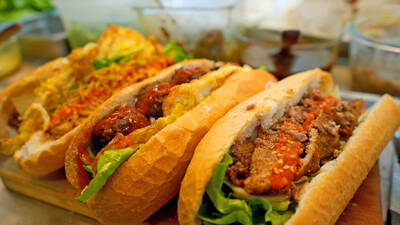
Stepping off the busy through-road at Yongan Market Station, lights flashing, horns honking, I turn down a small side street and into the warm embrace of my favorite hole-in-the-wall gem, the Hoi An Banh Mi shop (越南會安麵包), red flags and yellow lanterns waving outside. “Little sister, we were wondering where you’ve been, we haven’t seen you in ages!” the owners call out with a smile. It’s been seven days. The restaurant is run by Huang Jin-chuan (黃錦泉), who is married to a local, and her little sister Eva, who helps out on weekends, having also moved to New Taipei